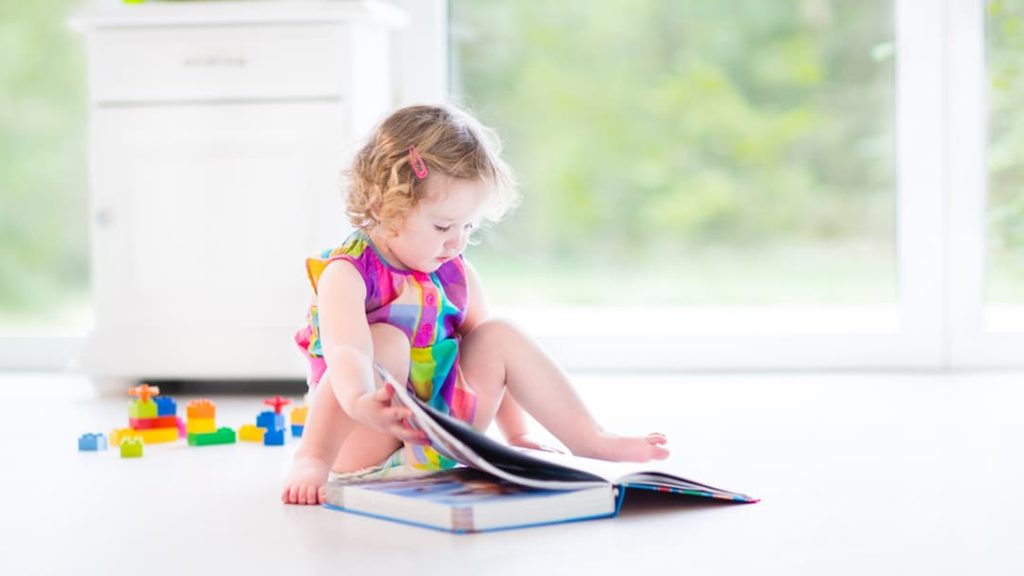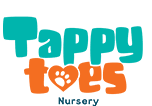
How to Encourage Reading in Early Childhood?
Reading is about so much more than just learning words. It builds a lifelong love of learning and opens up a new world of imagination and discovery. Most importantly, it is critical for success later in life.
At Tappy Toes Nursery, we believe nurturing a love of reading begins in early childhood. That’s why promoting literacy is at the heart of everything we do. We aim to nurture children who love books and grow into keen, confident readers. This blog will explore fun and engaging ways to encourage reading from a young age.
What is Early Literacy?
Early literacy refers to the skills and knowledge that help young children learn to read and write. It includes crucial pre-reading abilities like understanding language, developing phonemic awareness, learning letter names and sounds, grasping concepts about print and cultivating a love of books.
Digital Literacy Activities for Preschoolers
How to encourage reading in early childhood? Here are our top tips for making reading irresistible:
Make Reading a Daily Habit
Establishing reading as a daily routine is one of the most important things parents can do to boost early reading literacy skills. Try to carve out at least 10-15 minutes daily to snuggle up with a book. Making story time a regular, special bonding ritual without distractions allows children to develop strong reading habits. The consistency and practice of daily reading are key for literacy development.
Surround Children with Books
Filling the home and nursery environment with an attractive display of books encourages children to pick them up and naturally start exploring independently. Rotate books regularly so there is always something new and exciting to discover. Seeing other family members reading also motivates kids to copy that literacy behaviour. Keeping books easily accessible and part of the décor ensures reading materials constantly surround them.
Explore All Kinds of Books
Don’t limit story time exclusively to reading story books. Sharing various book types piques children’s curiosity and engages different learning styles. Alphabet books, rhyming books, board books with textures to touch, and non-fiction books about topics they love can all be shared. The variety helps build language skills, reinforce letters and sounds, and boost engagement through multi-sensory experiences.
Make it Fun!
Caregivers should transform reading into a highly engaging, interactive experience rather than just reciting words on a page. Bringing books to life with different character voices, using toys and props to act out the stories, and pausing regularly to check comprehension with questions keeps kids actively involved. Making story time enjoyable builds anticipation and motivation for future reading sessions.
Take it on the Go
Keeping a selection of small, portable books handy allows reading opportunities anytime, anywhere – like waiting in the car, at appointments, or when out and about. Car rides, bus trips, and other transit times become a perfect moment to nurture the portable nature of books. Reading during transitions reinforces literacy as an activity that can occur spontaneously throughout the day.
Get Interactive
Reading aloud is most impactful when combined with child participation. Asking kids to assist by turning pages, repeating phrases, and predicting what happens next engages their minds in meaningful interaction with the text. Welcoming opportunities to discuss, act out, and describe the story fosters comprehension and analytical skills.
Talk About the Story
Following up reading a book by discussing the characters, vocabulary, and plot points and relating it to the child’s life experience effectively doubles down on literacy learning. Going over new words, sequencing events, asking open-ended questions, and making personal connections highlight takeaways and solidify understanding. This necessary post-reading reflection time strengthens comprehension.
Make Your Own Books
Inviting children to create their storybooks with drawings, photos, and labels and dictating the text instils pride and confidence while developing essential pre-writing skills. Seeing their authored words printed on a page others can now read to them affirms literacy behaviours. Self-made books allow kids to develop foundational concepts of print.
Set Up a Reading Nook
Designating a snug, cosy space for reading makes book exploration a calm, pleasurable solo activity. Filling the nook with soft pillows, blankets, and stuffies provides comfort. Children can choose books independently in their unique reading area, which fosters concentration and free practice of literacy behaviours.
Make Connections
Making personal connections between books and a child’s life helps cement reading into their everyday experiences. Having related toys available, visiting places mentioned in stories, and choosing books about topics they recently learned about builds meaningful associations that increase motivation to read. Contextualising literary content sticks with children longer.
Promoting Literacy Through Play

Reading happens well beyond just books. Children absorb literacy skills from the whole environment. Here are some activities to promote reading:
Sensory Activities
Playing with sand, water, clay, shaving cream, and other sensory materials brings children joy and develops fine motor control and hand-eye coordination. These physical skills are necessary for writing letters, numbers and words as they grow. Finger painting and tweezers or eyedroppers to move small objects also help young minds build the fine motor abilities required for literacy. The open-ended nature of sensory play allows children to learn through self-directed exploration and discovery.
Dramatic Play
Children role playing different characters and scenarios through dramatic play spurs vocabulary growth as they talk through imaginary situations out loud. Providing authentic props like menus for a pretend restaurant, appointment cards for a doctor’s office, or dry-erase boards and papers for a pretend classroom encourages even more complex language use. Dramatic play is a prime opportunity for children to exercise their oral communication muscles.
Alphabet Toys
Hands-on toys like wooden letters, alphabet blocks, magnetic letters and puzzles that feature the alphabet are multi-sensory ways to reinforce letter recognition skills. Through freely arranging, stacking and sorting the hands-on letters, numbers develop a deeper imprint on young minds. These play activities subtly introduce early spelling concepts and phonemic awareness in a low-pressure, intrinsically rewarding way.
Environmental Print
Displaying print-rich materials from the natural world around the home, such as calendars, maps, street signs, product packages and more, exposes children to the various shapes letters can take on and the different contexts in which reading occurs. Taking time to point out this environmental print during everyday routines and conversations helps children understand that text has meaning.
Songs, Rhymes and Chants
Reciting repetitive songs, rhymes, chants, and fingerplays has cognitive benefits, like improving phonological awareness of smaller word sound units. It also builds vocabulary and aids narrative skills. These playful, musical interactions capture children’s interest while subtly strengthening pre-reading foundations like rhythmic awareness. Clapping out syllable-by-syllable helps develop auditory sequencing, too.
Conclusion
The early years are the best time to get children enthusiastic about reading when their minds are primed for rapid learning. At Tappy Toes Nursery, we understand that early literacy is essential for later learning. Our nursery provides a language-rich environment inside and out, with dedicated reading areas, writing zones and an extensive range of books. Staff use read-aloud sessions, interactive stories, rhymes, songs and letter crafts to nurture a love of books from an early age in a way that is playful, engaging and supportive of each child’s developmental stage. Small group reading time allows focused interaction, while activities integrate key literacy goals into every day through play. We help build the essential skills for lifelong literacy success in a nurturing and child-centred way.

